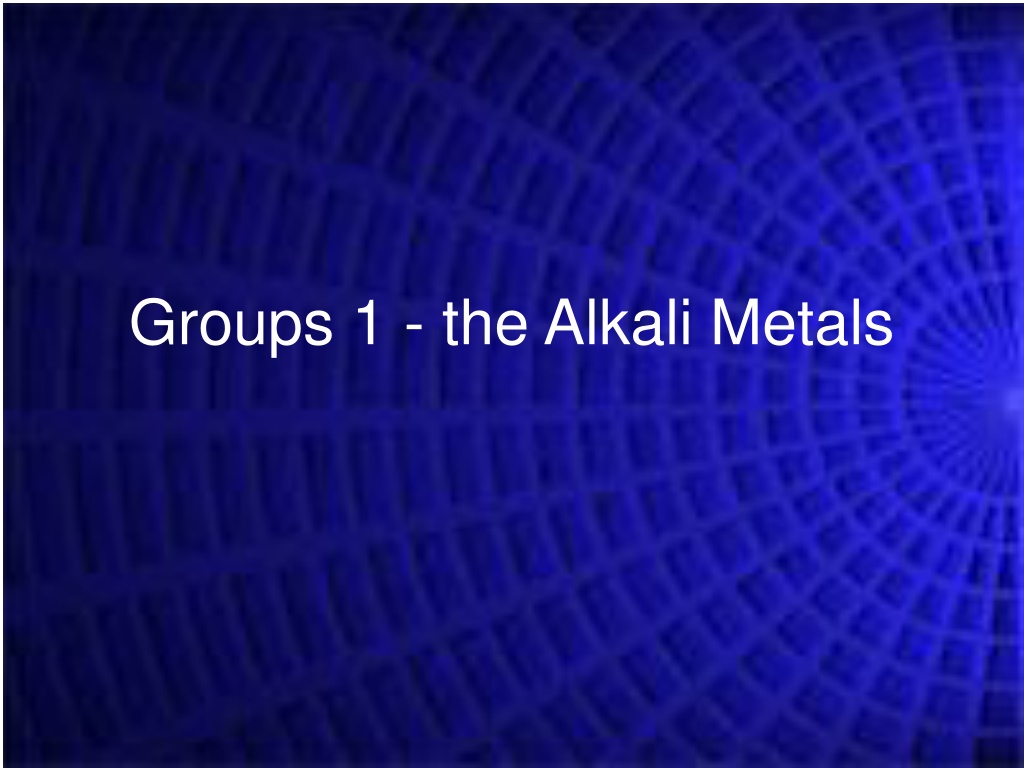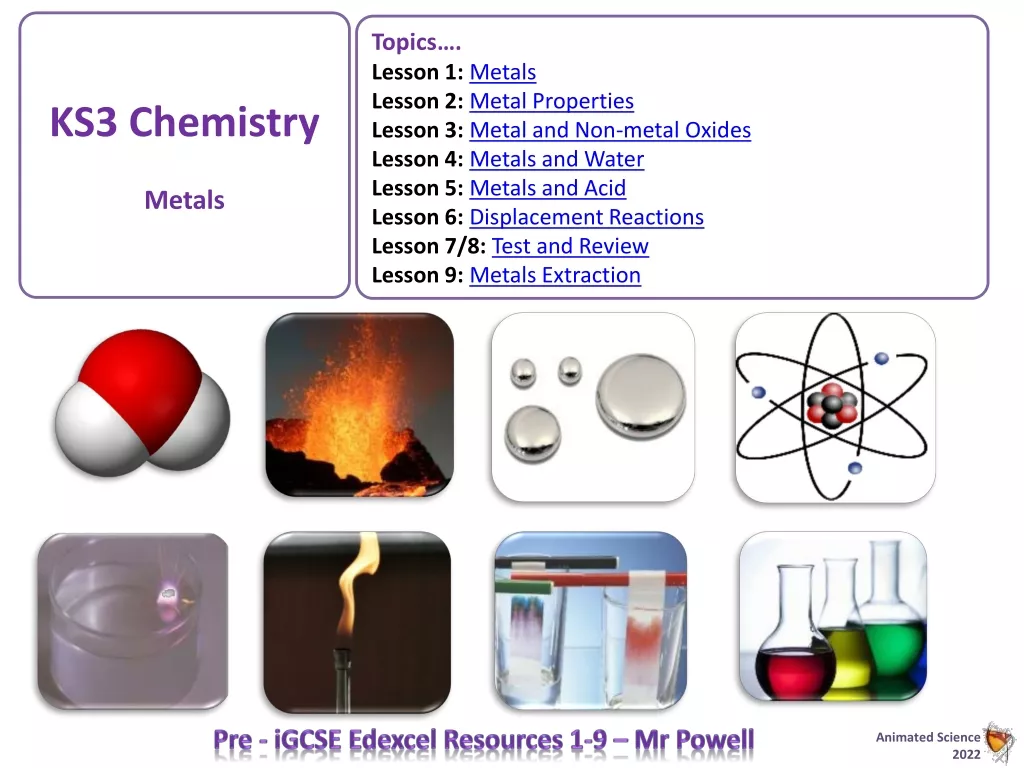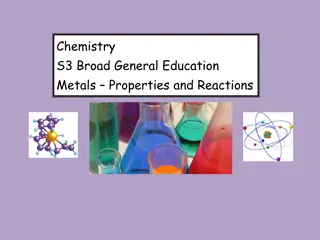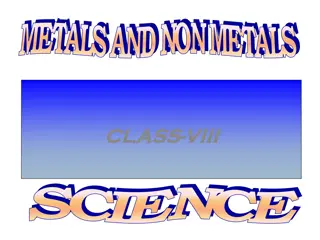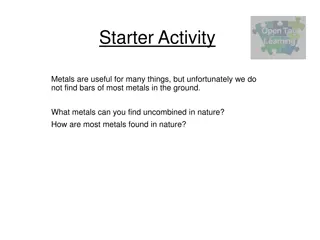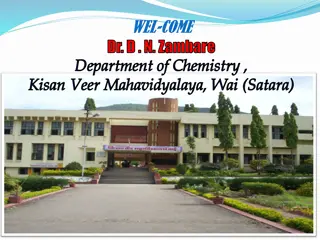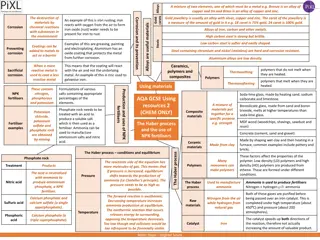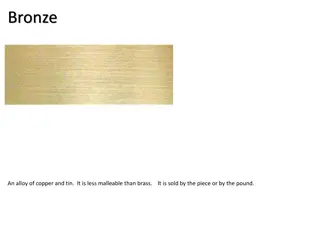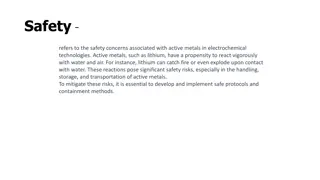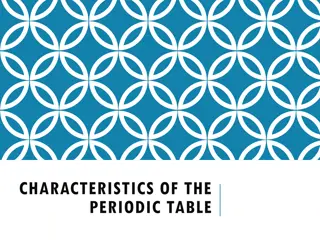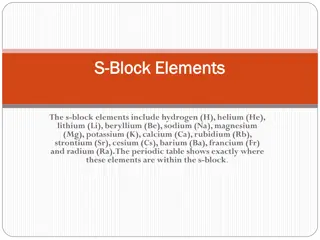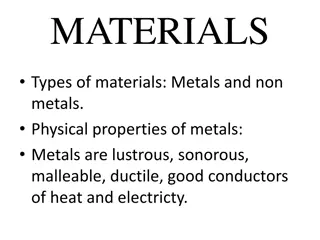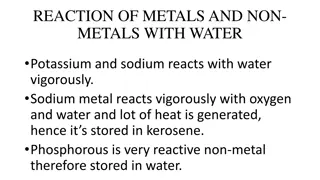Alkali Metals: Group 1 Elements
Alkali metals, found in Group 1 of the Periodic Table, include elements like lithium, sodium, and potassium. These metals are highly reactive, with properties that change as you move down the group. They have low densities and melting points, and their reactivity increases from top to bottom. Learn about their electron arrangements, properties, and reactions with water.
Download Presentation

Please find below an Image/Link to download the presentation.
The content on the website is provided AS IS for your information and personal use only. It may not be sold, licensed, or shared on other websites without obtaining consent from the author.If you encounter any issues during the download, it is possible that the publisher has removed the file from their server.
You are allowed to download the files provided on this website for personal or commercial use, subject to the condition that they are used lawfully. All files are the property of their respective owners.
The content on the website is provided AS IS for your information and personal use only. It may not be sold, licensed, or shared on other websites without obtaining consent from the author.
E N D
Presentation Transcript
starter What is the name of the group 1 elements? Name 3 of these elements. If one of these elements has the symbol and atomic number and mass Na 11 23 What are the number of protons, neutrons and electrons in this atom? What is the electron arrangement in this atom and how do we know what group we should place it in?
answers What is the name of the group 1 elements? Name 3 of these elements. If one of these elements has the symbol and atomic number and mass Alkali metals Lithium, sodium, potassium, rubidium, caesium, francium 23 Na 11 Protons = 11 Neutrons = 12 Electrons = 11 2,8,1 Placed in group 1 as the atom has one electron in its outer shell What are the number of protons, neutrons and electrons in this atom? What is the electron arrangement in this atom and how do we know what group we should place it in?
Walt and WILF WALT Different elements have different properties related to their position in the Periodic Table WILF Locate the position in the Periodic Table of the alkali metals. Recall how the alkali metals react with water and how this reaction changes as we travel down the group. Recall whether these reactions are endothermic or exothermic.
Group 1 The alkali metals Li Na K Rb Cs Fr
Representative Elements Groups 1 and 2 Groups 1 and 2 are always found in nature combined with other elements. They re called active metals because of their readiness to form new substances with other elements. They are all metals except hydrogen, the first element in Group 1. Although hydrogen is placed in Group 1, it shares properties with the elements in Group 1 and Group 17.
Alkali Metals The Group 1 elements have a specific family name alkalimetals. All the alkali metals are silvery solids with low densities and low melting points. These elements increase in their reactivity, or tendency to combine with other substances, as you move from top to bottom.
Walt and WILF WALT Different elements have different properties related to their position in the Periodic Table WILF Locate the position in the Periodic Table of the alkali metals. Recall how the alkali metals react with water and how this reaction changes as we travel down the group. Recall whether these reactions are endothermic or exothermic.
Group 1 The alkali metals Some facts 1) These metals all have ___ electron in their outer shell 2) Reactivity increases as you go _______ the group. This is because the electrons are further away from the _______ every time a _____ is added, so they are given up more easily. 3) They all react with water to form an alkali (hence their name) and __________, e.g: Potassium + water potassium hydroxide + hydrogen 2K(s) + 2H2O(l) 2KOH(aq) + H2(g) Words down, one, shell, hydrogen, nucleus
Plenary 1. Predict What would happen if rubidium was added to water. 1. how fast will it react? 2. Will it be endothermic or exothermic? 3. What gas will be formed? 4. What would be the word equation
Plenary 2. Predict What would happen if caesium was added to water. 1. how fast will it react? 2. Will it be endothermic or exothermic? 3. What gas will be formed? 4. What would be the word equation?
This powerpoint was kindly donated to www.worldofteaching.com http://www.worldofteaching.com is home to over a thousand powerpoints submitted by teachers. This is a completely free site and requires no registration. Please visit and I hope it will help in your teaching.
